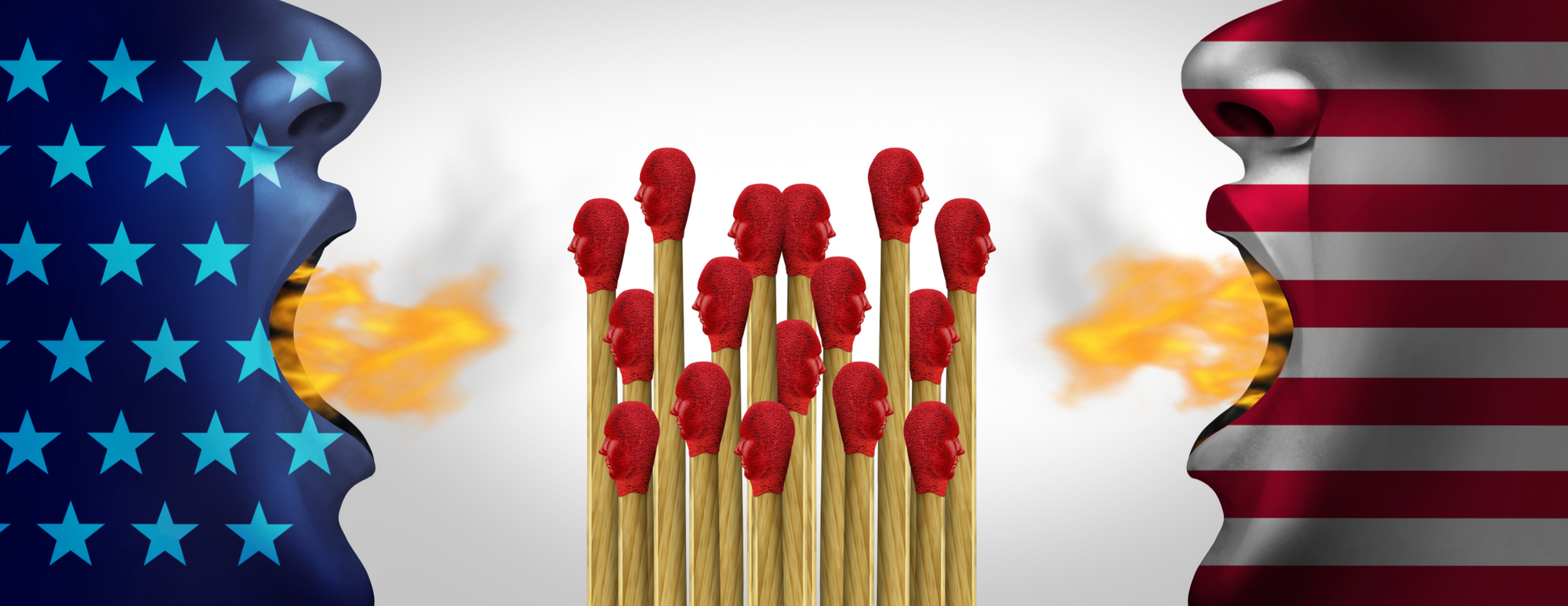Gaslighting.
gaslighting - manipulate (someone) by psychological means into questioning their own sanity.

In deciding to co-found this blog with my oldest son, I realized I needed to find my voice. For writers, our voice is a style silencing the little critic inside our heads persistently challenging us to be brief, unique, and clarion in our narratives. Don’t get it twisted, writers are performance artists craving your attention and applause. Sadly, I am just like my colleagues. I love the sound of my own pen. Or keyboard. Nowadays, the hurdle I face is the firehose of attention-seeking websites vying for your precious moments of undivided attention. In short, our site needed to be worthy of your time.
I thought I would kick off our journey with an honest look at antiquity. The run-up to the 2016 election. I know. Politics. Really? However, as politics seems to be inexorably linked to our wallets, let’s wade into the deep end of media analysis as an object lesson in our own shared awareness. In short, I want to polish up your bullshit meter.
In the days before the 2016 election select media outlets and experts said:
CNN (November 4, 2016) “Our September client survey showed that the Street convincingly believes that Hillary Clinton will be the next American president,” wrote Tobias Levkovich, Citi’s chief U.S. equity analyst. “However, if Donald Trump were to win, that outcome would have been unexpected and thereby may cause a jump in the equity risk premium.”
The research firm Macroeconomic Advisers forecast in early October that a Trump win would result in an 8% drop in U.S. stocks due to uncertainty about his economic and trade policies. The Brookings Institute projects a 10% to 15% plunge in stocks if Trump wins.
The reality turned out to be otherwise:
CNN (November 9, 2016) The Dow soared 257 points and brushed up against lifetime highs on Wednesday, in defiance of those who predicted Trump’s election would bring about a plunge in the stock market. The S&P 500 and the Nasdaq rose 1.1% apiece.
The impressive market performance represents a dramatic reversal from the knee-jerk panic in global markets overnight as the results were coming in. Dow futures plummeted nearly 900 points at one point as investors expressed fear that no one would emerge victorious and concern about the inherent uncertainties brought on by a Trump White House.
But a sense of relative calm returned to the markets by morning. The rally gathered momentum midday after Hillary Clinton, Wall Street’s favored candidate, officially conceded.
Nov. 8: Donald Trump wins U.S. presidential election. Dow drops nearly 1,000 points in after-hours futures trading.
Nov. 9: “Trump Rally” begins with a 257-point advance.
Nov. 22: Dow closes above 19,000 for the first time in its 120-year history.
Dec. 14: Fed hikes interest rates for the first time in 2016, and the second time since the 2008 financial crisis.
Dec. 20: Dow flirts with 20,000, comes within 12.37 points of history-making milestone. Closes at an all-time high of 19,974.62.
Dec. 31: Dow ends 2016 at 19,762.60.

According to our mainstream media, a Clinton victory would soothe investors and boost the market’s fortunes. The reality was that investors flocked into the market after Trump’s victory. Far from the forecasted market correction or mini-crash, the Dow Jones Industrial Average (above) rocketed to all-time new highs.
But we, as market players should have known the truth because:
Mutual fund cash flow data clearly showed (see line graph below) investors were exiting mutual funds prior to Clinton’s certain election victory. Then the money piled in after Trump’s surprise win.

Nate Silver’s polling website fivethirtyeight.com had the consensus as Clinton winning by 4% or greater as shown in the graphic below. It seems that prognostications of a market collapse after a Trump win were attempts to warp the knowable reality. Or tactical fear-mongering in the waning hours before the election to sway voters. Or maybe, something more sinister and calculating.

Psychologists use the term “gaslighting” to refer to a specific type of manipulation where the manipulator is trying to get someone else (or a group of people) to question their own reality, memory, or perceptions. And it’s always a serious problem, according to psychologists.
At Beyond the Hype, we don’t listen to what people say, we watch what they do. Behavior never lies. Money never lies. Our American media outlets have a business model that thrives on agenda-driven manipulation. They are compelled to lead with headlines and stories dripping with salacious inaccuracies as a matter of economic survival. Or so they postulate. The run-up to the 2016 election is just one example of their blatant, untempered bias. At Beyond the Hype, we will strive to be more concise. More data-driven. More irreverent in our analysis of our shared world.
For full disclosure purposes, I didn’t vote for either candidate in the 2016 election. Also, I have met and talked with Bill and Hillary Clinton on several occasions. In the 2008 election cycle, I raised money for Hillary Clinton’s primary and general election fund. I have never met President Donald Trump.

